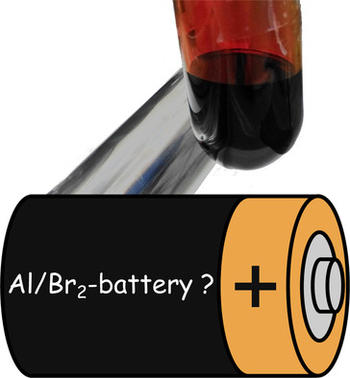First Investigations towards the Feasibility of an Al/Br₂-Battery based on Ionic Liquids
Michael Stephan Hog, Benedikt Burgenmeister, Kolja Bromberger, Michael Schuster, Sebastian Riedel, Ingo Krossing – 2017
We present first investigations towards the feasibility of an Al/Br₂ battery based on ionic liquids (ILs). The charged battery consisted of an Al anode, a bromoaluminate IL as the anolyte, an ion‐exchange membrane, a polybromide IL as the catholyte, and an inert cathode. The open‐circuit voltage (OCV) of the battery was strongly dependent on the molar ratio of AlBr₃ in the anolyte with values of 1.9 V when using a Lewis basic anolyte and 1.1 V when using a Lewis neutral anolyte. NMR studies with different organic cations in both electrolytes revealed the migration of organic cations as major charge‐balancing ions, which leads to a reduced theoretical energy density of 33 Wh L⁻¹ (as opposed to 166 Wh L⁻¹ for an anion mechanism). The battery could be discharged with high discharge resistance values of up to 3 kΩ cm², and preliminary charging attempts revealed high overpotentials. Hitherto, an Al/Br₂ cell with a Lewis basic anolyte could be used as primary battery with an OCV of 1.9 V.

